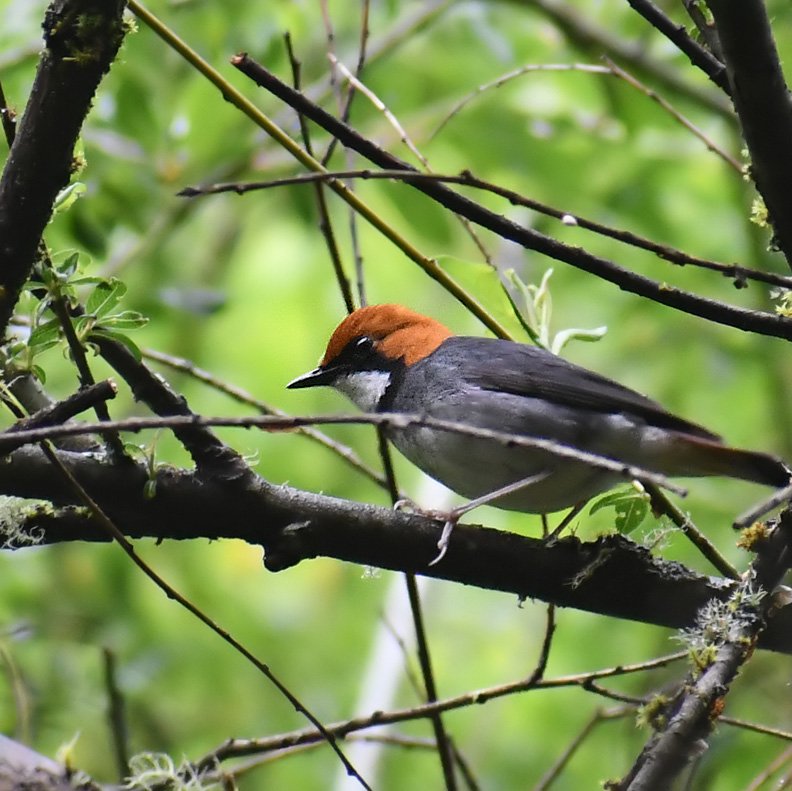
Andrew Whitehouse
@Anthrobirder
Followers
933
Following
28K
Media
1K
Statuses
2K
Anthropologist at University of Aberdeen. Mostly post about birds and music. Views tenuously my own. On BSKY here: https://t.co/Fovt5SEQWT
Aberdeen, Scotland
Joined November 2018
Fulmars and Gannets were cruising the tall waves off Girdle Ness today, with most birds heading south.
0
0
8
A Redshank paddling the shallow harbour edge at Girdle Ness this morning.
0
0
5
The most fun image & video creation tool in the world is here. Try it for free in the Grok App.
0
215
1K
Still plenty of Common Terns at Girdle Ness. They seem to linger further into autumn these days, particularly when they've had a good breeding season.
0
0
9
A Whinchat, amidst the gorse and gathering dusk at Girdle Ness this evening. My first of the year and it made me wonder what other migrants were lurking in the bushes.
0
0
13
Eye-wateringly bad pictures of a sub-adult (2nd calendar year?) Long-tailed Skua that flew north off Girdle Ness this evening. An unusual plumage I'd not seen before. Earlier today, a Balearic Shearwater also went through.
1
0
10
Seven Sooty Shearwaters on this evening's seawatch from Girdle Ness. Also, Arctic Skua, Puffin, seven Bonxies, 35 Manx Sheatwaters, 123 Fulmars, 16 Arctic Terns, and three Common Scoters.
0
0
7
Here are two of the 19 Sooty Shearwaters that passed Girdle Ness this evening. Other birds on the go included eight Bonxies, an Arctic Skua, 34 Manx Shearwaters and 20 Arctic Terns. Also my first two Wheatears of the autumn.
1
0
17
I enjoyed a pleasant but hot stay in Croatia recently. The birding was good at Vransko, including an unexpected Broad-billed Sandpiper, as well as Spotted Crake, Caspian Tern and two Temminck's Stint. I finally managed to catch up with Rock Partridge on Pag too.
0
0
20
Dark shapes jumping at the horizon. The sea off Girdle Ness this evening was heaving with White-beaked Dolphins. Dozens were doing fast leaps out of the water, both horizontally and vertically. Most were around 2-3 miles out but some were a few miles more distant.
0
0
8
The recent influx of terns into Greyhope Bay gave me hope I might finally encounter a patch tick Roseate Tern. This evening, that hope was realised with this lovely adult. Such an elegant seabird.
1
0
24
A few birds from wonderful northwest Argentina, in this case from the highlands of Cuesta del Obispo. Here are Black-billed Shrike Tyrant, Bare-eyed Ground Dove, Grey-hooded Parakeet and Rufous-bellied Mountain Tanager. The latter was a fortunate sighting of this tricky bird.
0
2
6
A silver sea for seawatching this evening at Girdle Ness. My first two Sooty Shearwaters of the headed north, along with 56 Manx Shearwaters.
0
0
8
Magellanic Plover was a hugely pleasing bird to see in southern Buenos Aires province. These photos from Balneario Orense show off its odd pigeon-like countenance and oversized orange feet nicely.
0
0
6
Southern Screamer is an Argentinian bird you wouldn't want to mess around with, particularly once you notice the two spurs protruding from each forewing. Photos from near San Clemente del Tuyú.
1
0
8
A bird I encountered more easily than expected in eastern Argentina was Hudson's Canastero, a scarce bird of rushy marshes. I love the subtle colours and shapes on the back. Taken in San Clemente del Tuyú.
0
0
11
Winter goose watching South American style, from last week in southern Buenos Aires province. I saw large numbers of Ashy-headed and Upland Goose and smaller numbers of the rarer Ruddy-headed Goose.
0
0
8
It was a good day for butterflies at St Fittick's Park today, with nine species including just my second ever Comma here. This species is still scarce in Aberdeen but seems to be getting more frequent.
0
0
10
This Iceland Gull has been at Girdle Ness for two months now and is the first one to summer here that I can recall. It often seems to keep to itself. The throng of other gulls feeding offshore were interrupted by a Minke Whale rising through the waves.
0
0
10
One of two Black Guillemots off Girdle Ness today. It's a strange time here for seabirds, with lingering Arctic Skuas that should be breeding further north and hundreds of loafing Kittiwakes looking as if they've given up already. Like August in June.
0
1
10








































